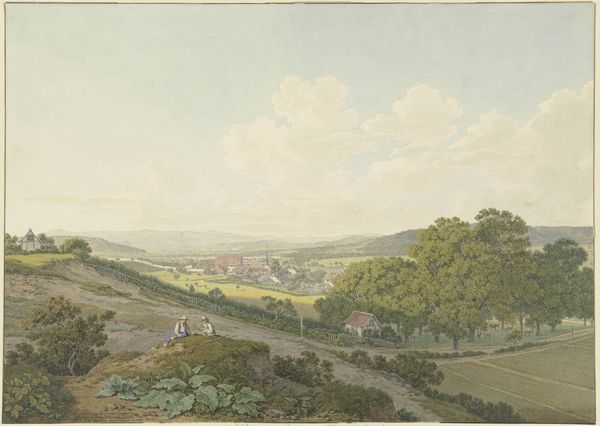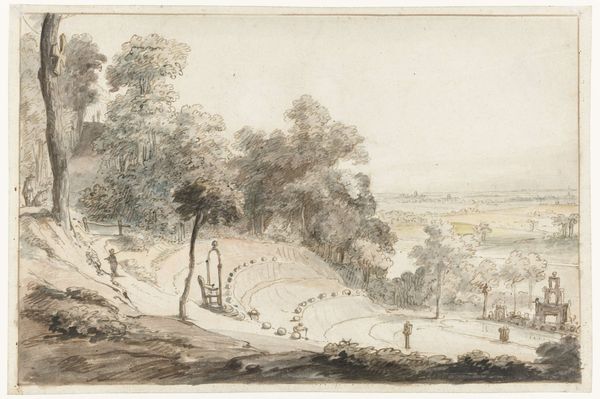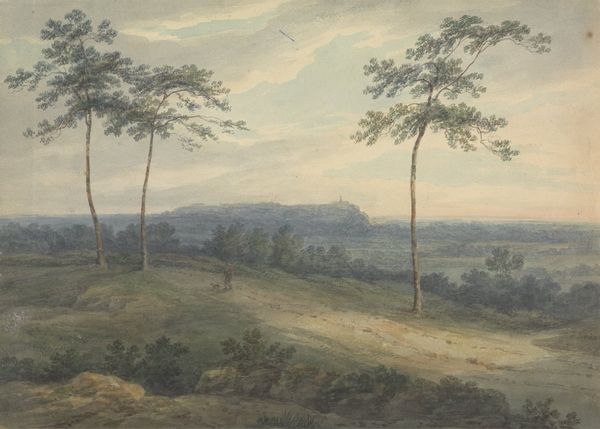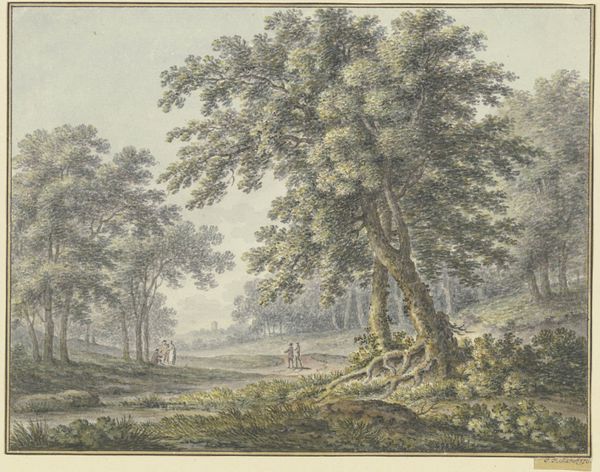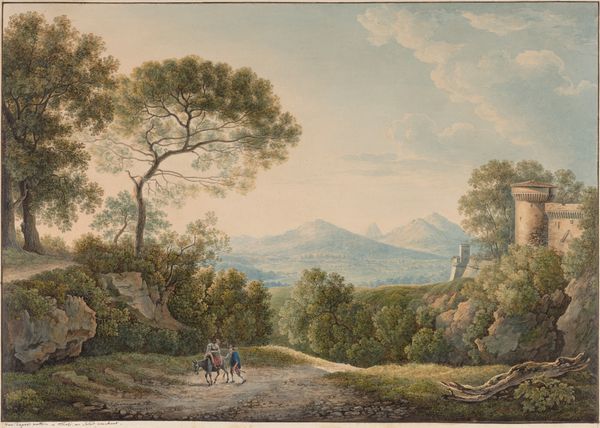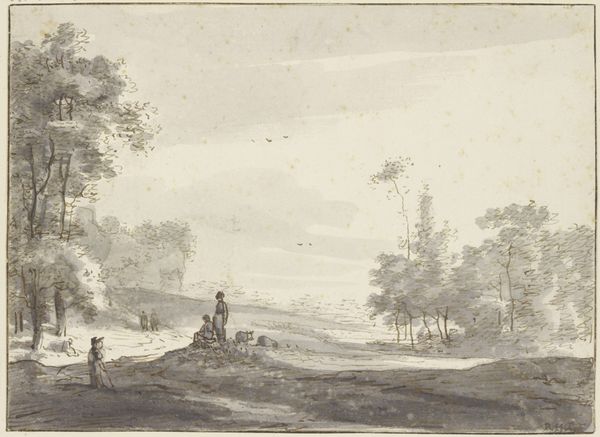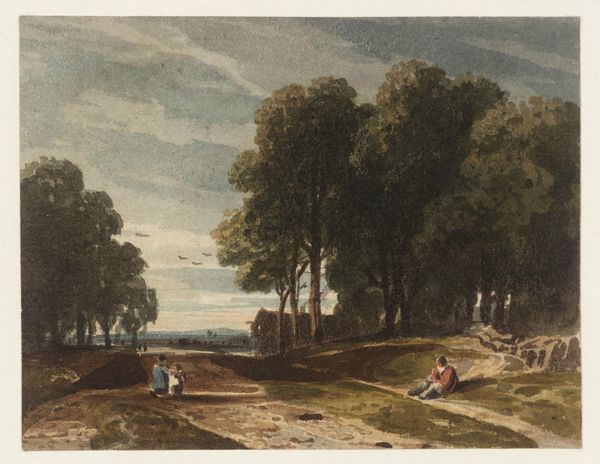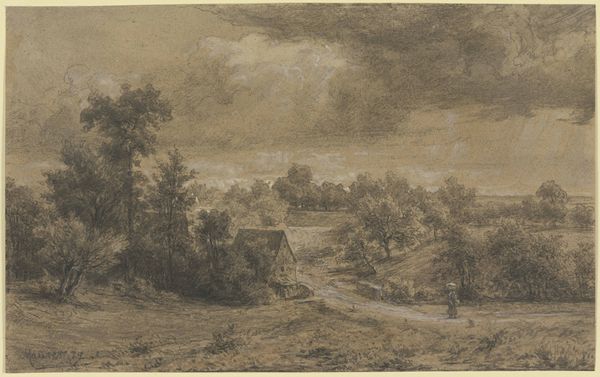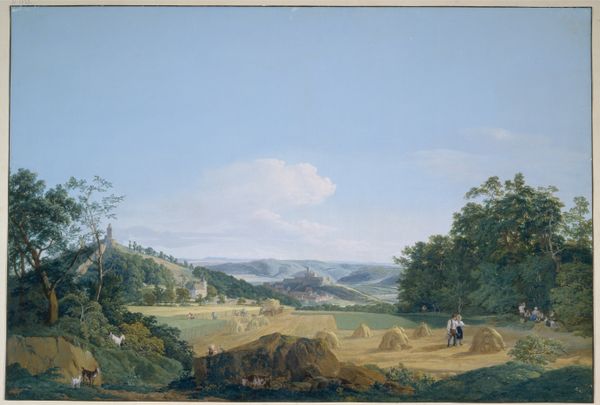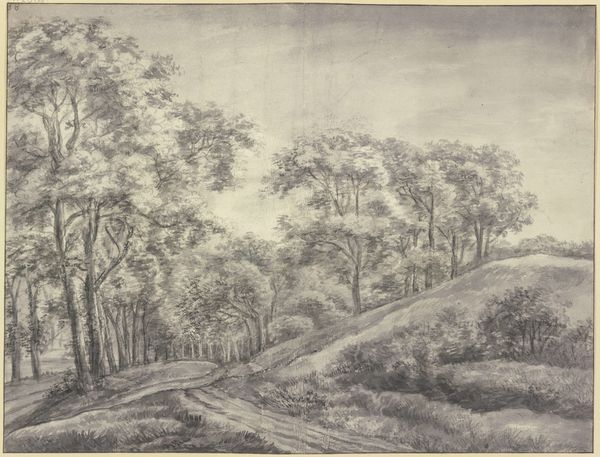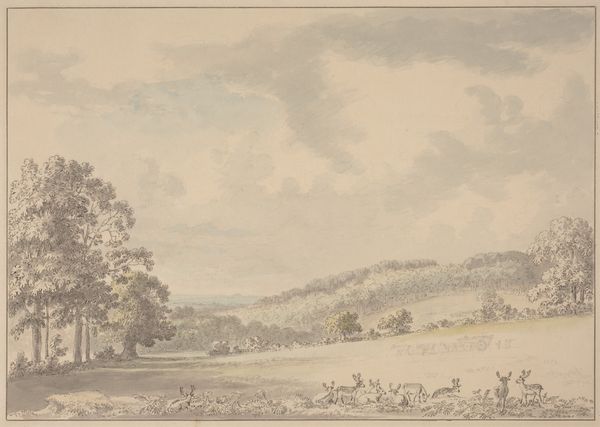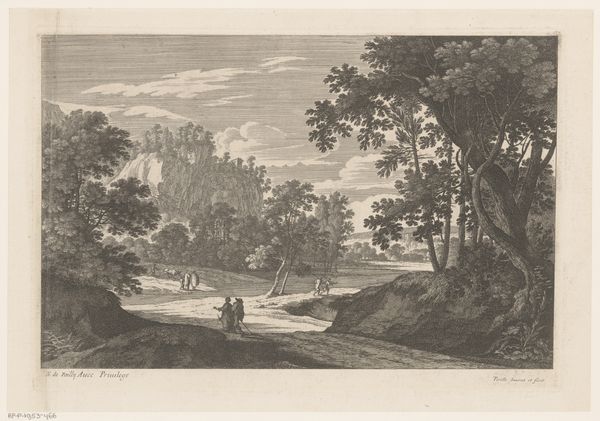
Blick auf das Rheintal von der Hohen Wurzel zwischen Wiesbaden und Bad Schwalbach aus, mit Staffagefiguren 1777
0:00
0:00
drawing, paper, ink, indian-ink
#
drawing
#
toned paper
#
light pencil work
#
pencil sketch
#
landscape
#
possibly oil pastel
#
paper
#
ink
#
german
#
coloured pencil
#
indian-ink
#
15_18th-century
#
watercolour bleed
#
watercolour illustration
#
botanical art
#
watercolor
#
warm toned green
Copyright: Public Domain
Johann Jakob Koller rendered this vista of the Rhine Valley with delicate strokes, animating it with staffage figures, those anecdotal characters so beloved in landscape art. The trees, rendered with such verdant detail, are not mere scenery; they are symbolic intermediaries between the human and the divine, reminiscent of the sacred groves of antiquity. In ancient Greece, the oak was sacred to Zeus, a symbol of strength and endurance. The presence of the figures, some burdened with baskets, connects to the age-old motif of labor and the human relationship with the earth. We see this echoed in medieval tapestries where peasants till the land under the watchful eye of the nobility. The landscape itself, with its winding river, evokes the cyclical nature of life, a theme that pervades art across cultures and epochs. This is not simply a picturesque view; it is a carefully constructed tableau that engages our collective memory, reminding us of humanity's enduring connection to the natural world. The vista is not just seen, but felt.
Comments
No comments
Be the first to comment and join the conversation on the ultimate creative platform.

